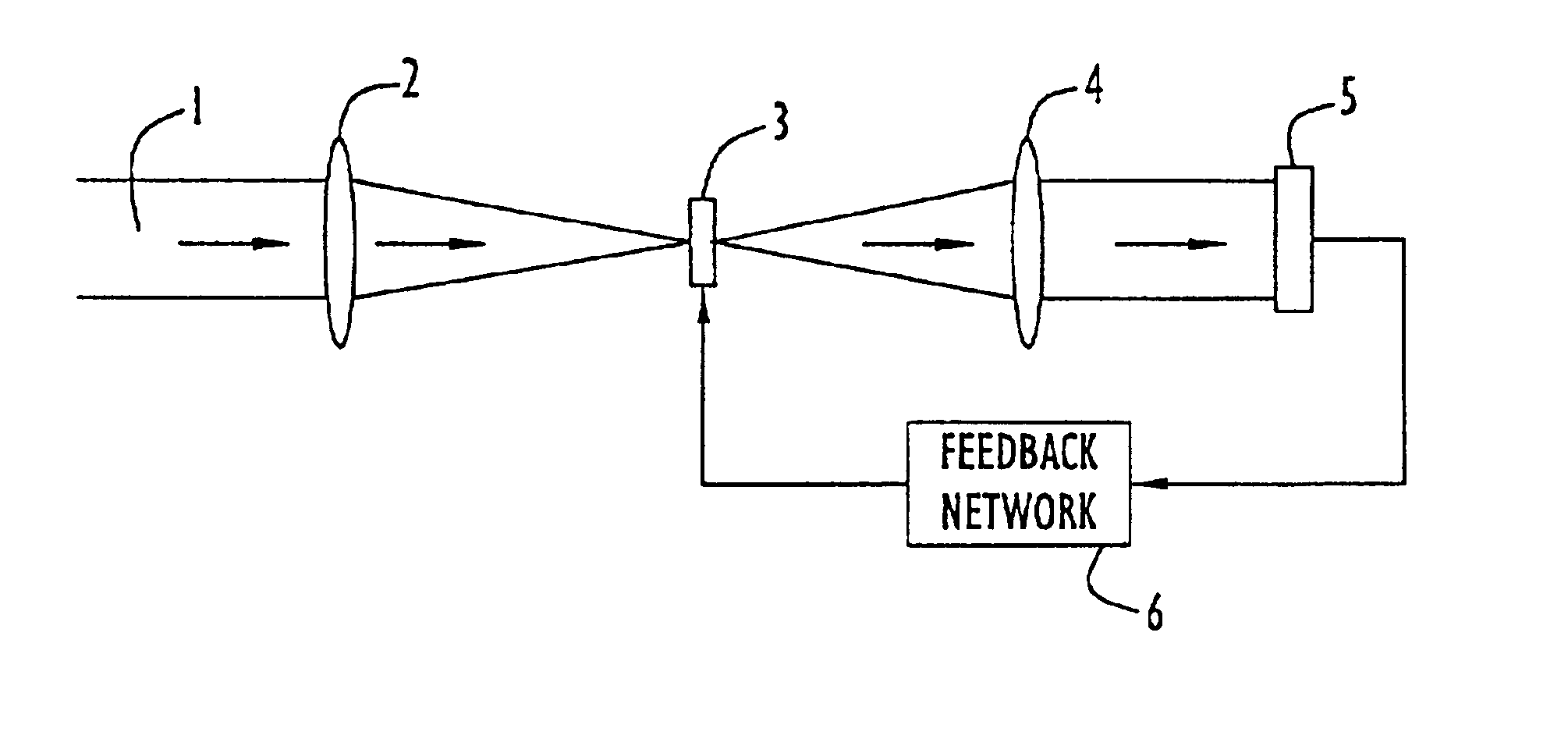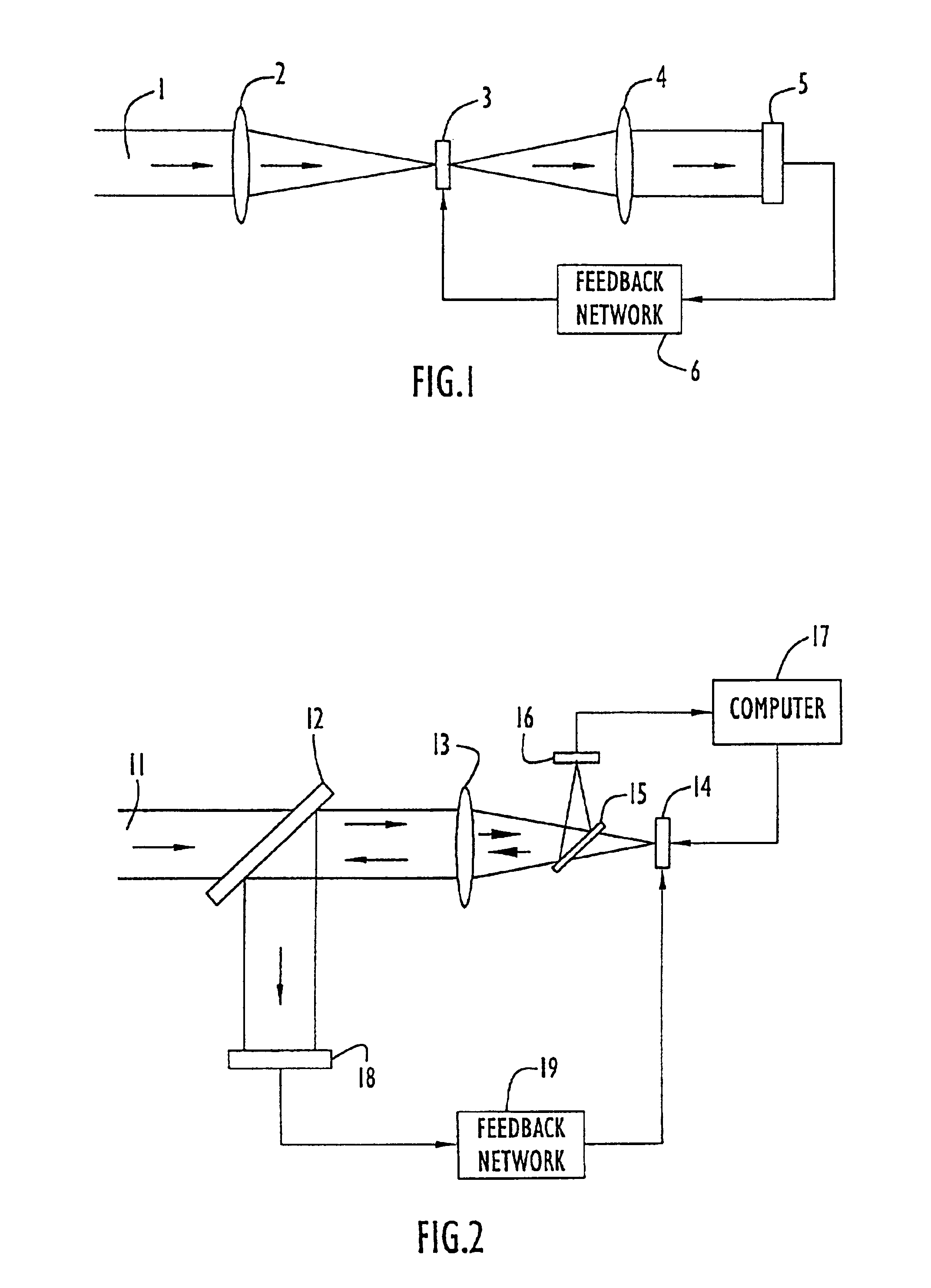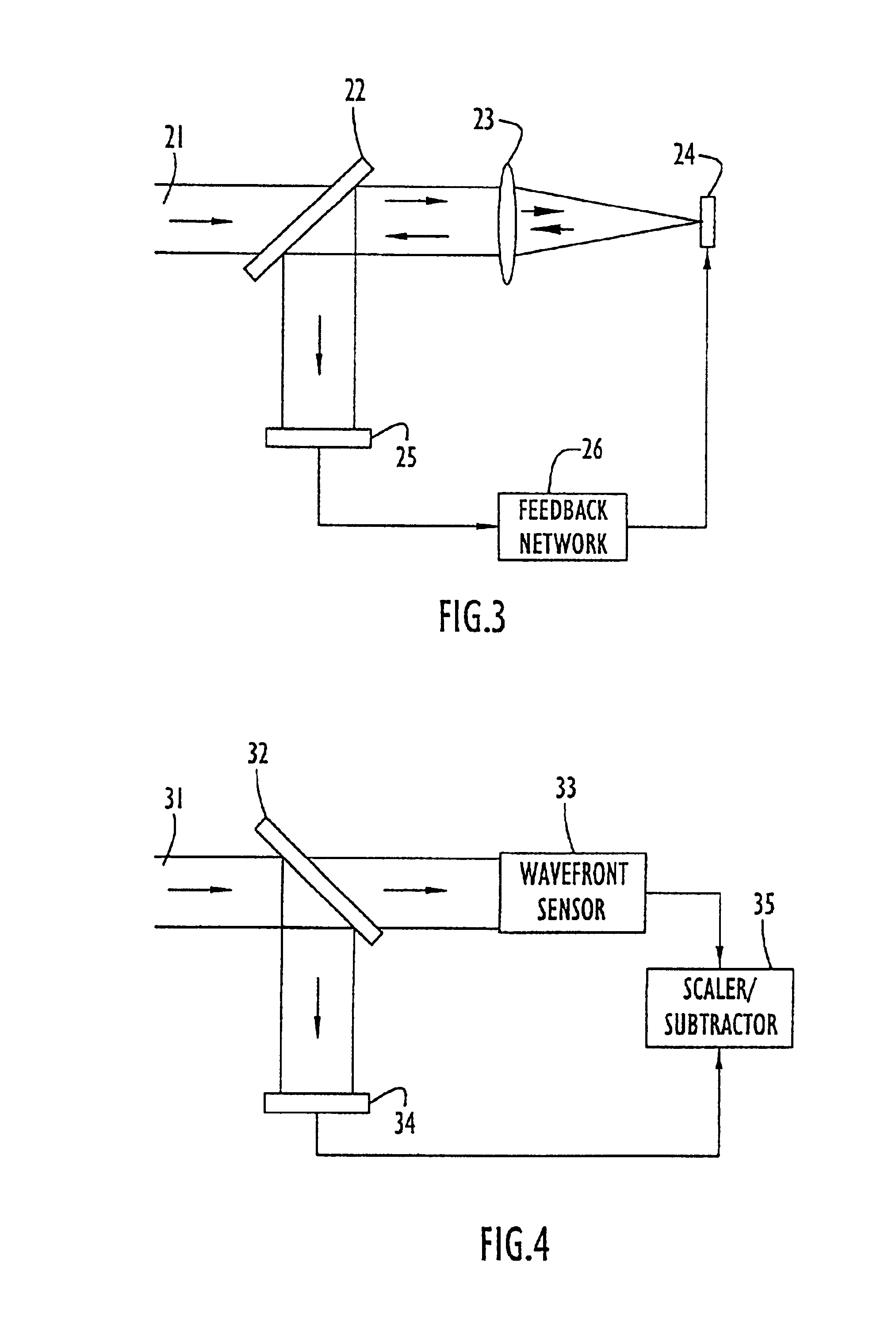Wavefront phase sensors using optically or electrically controlled phase spatial light modulators
- Summary
- Abstract
- Description
- Claims
- Application Information
AI Technical Summary
Benefits of technology
Problems solved by technology
Method used
Image
Examples
Embodiment Construction
[0020]FIG. 1 shows a wavefront sensor based on a liquid crystal (LC) optically controlled phase SLM. A light beam 1 enters the system and is focused by lens 2 onto the LC optically controlled phase SLM 3: The SLM 3 responds to the optical intensity distribution incident upon it by producing a corresponding index of refraction (or birefringence) distribution that affects the light passing through the SLM. Lenses 2 and 4 are used in the usual manner for Fourier-domain filtering with SLM 3 serving as the Fourier-domain filter. The photodetector array 5 measures the output beam intensity distribution. If the SLM has an electrical input that controls its overall optical sensitivity (i.e., slope of the index of refraction change versus incident optical intensity curve) then this electrical input can optionally be adjusted to improve the output image contrast with the electronic feedback network 6 that uses an input signal from the photodetector array 5.
[0021]FIG. 2 shows a wavefront senso...
PUM
 Login to View More
Login to View More Abstract
Description
Claims
Application Information
 Login to View More
Login to View More - Generate Ideas
- Intellectual Property
- Life Sciences
- Materials
- Tech Scout
- Unparalleled Data Quality
- Higher Quality Content
- 60% Fewer Hallucinations
Browse by: Latest US Patents, China's latest patents, Technical Efficacy Thesaurus, Application Domain, Technology Topic, Popular Technical Reports.
© 2025 PatSnap. All rights reserved.Legal|Privacy policy|Modern Slavery Act Transparency Statement|Sitemap|About US| Contact US: help@patsnap.com



